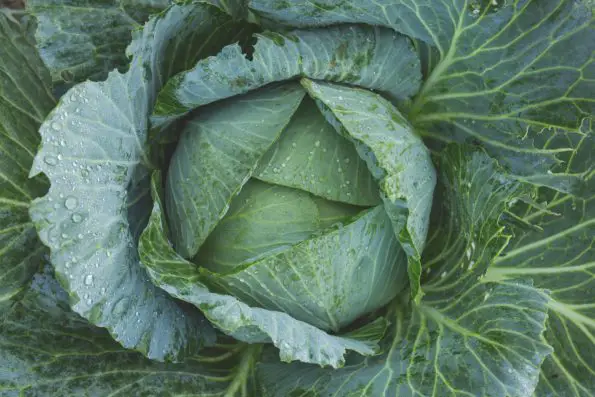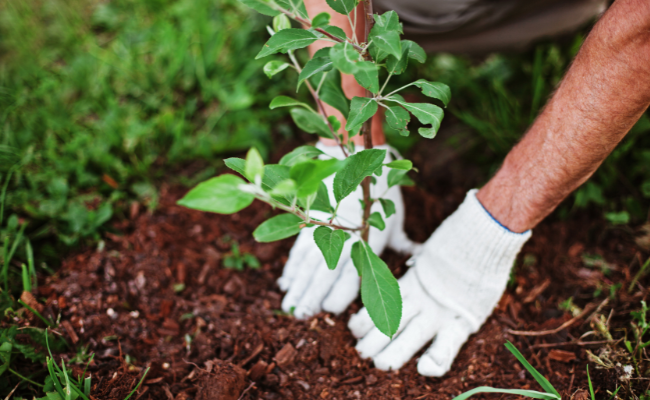1. Introduction: The New Era of Gardening Tools
Welcome to the new era of gardening tools, where innovation and technology have transformed the way we cultivate and care for our green spaces. Over the past few years, gardening enthusiasts and professionals alike have witnessed a revolution in gardening tools, leading to more efficient, enjoyable, and sustainable practices. No longer limited to traditional tools, today’s gardeners can reap the benefits of advanced technology, smart features, and ergonomic designs that make gardening not just a task, but a pleasure.
The revolution in gardening tools has been driven by the need for more efficient, environmentally-friendly solutions that cater to the demands of modern life. Advanced technology has played a crucial role in this transformation, enabling us to approach gardening with precision, ease, and creativity. Whether you’re a weekend warrior looking to improve your backyard or a seasoned horticulturist aiming for maximum yield, the latest gardening tools are designed to meet your needs while minimizing effort and maximizing results.
So, what exactly makes these modern tools indispensable? Let’s explore the importance of advanced technology in modern gardening:
- Efficiency: Modern tools are designed to save time and reduce physical strain, allowing gardeners to complete tasks more quickly and effectively.
- Sustainability: Eco-friendly features and smart technologies promote sustainable gardening practices, reducing waste and conserving resources.
- Precision: Advanced tools offer improved accuracy for tasks like planting, pruning, and watering, ensuring optimal care for plants.
- Ergonomics: Ergonomically crafted tools minimize strain on the body and enhance the overall gardening experience.
- Connectivity: Some modern tools can be connected to smart devices, providing data-driven insights for better garden management.
A journey through the new era of gardening tools will not only introduce you to groundbreaking technologies but also inspire you to transform your gardening practices. In the following sections, you will learn about:
- The most innovative tools making waves in the gardening world.
- How these tools integrate technology for better gardening results.
- Expert tips on maximizing the potential of these advanced tools.
- Reviews and comparisons to help you choose the right tools for your needs.
Whether you’re looking to upgrade your existing toolkit or starting your gardening journey, the insights and knowledge you gain here will assure you of making informed, beneficial decisions. Dive in to discover how modern gardening tools can revolutionize your gardening experience, providing efficiency and joy in every facet of this beloved pastime.

2. Smart Tools for Precision Gardening
Gardening has come a long way from the days of simple hand tools and guesswork. In today’s digital age, technology is revolutionizing the way we approach agriculture and gardening, introducing a new era known as smart gardening. Leveraging advanced technologies not only enhances productivity but also ensures sustainability and resource efficiency. In this segment, we will delve into the world of smart tools for precision gardening, offering an introduction to smart gardening technology. We will take an in-depth look at innovative tools like soil sensors and smart irrigation systems, and explore the benefits of precision gardening for maximizing yield and efficiency.
Introduction to Smart Gardening Technology
Smart gardening, often referred to as precision gardening, integrates modern technology with traditional gardening practices to optimize plant care and resource management. By utilizing various sensors, IoT devices, and automated systems, gardeners can monitor and control environmental factors such as soil moisture, temperature, and light, thus creating the ideal conditions for plant growth.
These tech-savvy tools are designed to provide real-time data and feedback, enabling gardeners to make informed decisions and refine their practices. From urban gardens to extensive farmland, smart gardening technology presents opportunities for anyone looking to improve their green thumb.
In-depth Look at Tools
- Soil Sensors
Soil sensors are one of the cornerstones of precision gardening technology. These devices are intricately designed to monitor soil conditions such as moisture content, pH levels, and nutrient density.
By placing soil sensors at strategic locations within the garden, gardeners receive continuous readings and insights into the health of the soil. These sensors often connect to mobile apps or online platforms, providing convenient access to data and allowing for easy adjustments in watering schedules or nutrient applications.
- Smart Irrigation Systems
Water is a critical resource in gardening, and smart irrigation systems are playing a pivotal role in ensuring that it is used efficiently. Utilizing weather data, soil moisture levels, and plant-specific needs, smart irrigation systems automate watering in a way that prevents both under- and over-irrigation.
These systems can be scheduled or controlled remotely through smartphone applications, offering gardeners the flexibility to water their crops from anywhere in the world. This not only conserves water but also reduces the risk of diseases that often arise from overwatering.
Benefits of Precision Gardening
Implementing smart tools in gardening routines leads to numerous advantages that directly affect yield and efficiency. Here are some of the primary benefits:
- Maximizing Yield
By utilizing technology like soil sensors and smart irrigation systems, plants receive the optimal amount of water and nutrients, promoting healthier growth and potentially increasing yields. Precision gardening minimizes waste and ensures that each plant is nurtured according to its specific needs.
- Resource Efficiency
Conserving water and utilizing fertilizers judiciously are significant advantages of smart gardening. These practices are crucial in areas that face water scarcity and help in reducing the overall environmental footprint of gardening activities.
- Reduced Labor
Automation in watering and real-time monitoring of soil conditions mean less manual work for gardeners. This allows for more time to focus on other important aspects of gardening, such as pest control and harvesting.
- Sustainability
Sustainability is at the heart of smart gardening. By reducing resource consumption and promoting healthier plant systems, precision gardening supports long-term ecological balance. This approach aligns with the growing global movement towards more sustainable and environmentally friendly gardening practices.
In conclusion, smart gardening technology is transforming the task of cultivating plants into an efficient, sustainable, and high-yielding activity. Whether you are a gardening hobbyist or a professional farmer, embracing these innovative tools can lead to significant improvements in your gardening outcomes. With technology advancing rapidly, the future of smart gardening holds even more exciting possibilities for the cultivation of plants in harmony with our environment.
As the gardening world continues to evolve, those who adapt and integrate these smart technologies will undoubtedly reap the benefits of precision gardening, marking an exciting new chapter in agricultural history.

3. Eco
In the evolving world of gardening, the surge towards sustainability is not just a fad – it’s a necessity. As environmental awareness grows, gardeners are turning to eco-friendly innovations to reduce their carbon footprint and promote sustainable practices. In this discussion, we will delve into various eco-friendly gardening tools, highlight the benefits of solar-powered equipment and recycled materials, and explore how these tools contribute to a more sustainable gardening approach.
Gardening has long been a means of connecting with nature, but traditional gardening tools and methods often involve materials and processes that can negatively impact the environment. By opting for eco-friendly tools, gardeners can minimize their environmental impact while nurturing their green spaces. Below, we outline the range of tools that are redefining sustainable gardening:
- Hand Tools Made From Recycled Materials: One of the most straightforward ways to adopt sustainable practices is by using hand tools made from recycled materials. Whether it’s a spade with a handle recycled from plastic bottles or a trowel forged from reclaimed metals, these tools not only reduce waste but also cut down on the need for new raw materials.
- Composters and Rain Barrels: A critical component of sustainable gardening involves water conservation and waste management. Composters turn organic waste into nutrient-rich soil, while rain barrels collect and store rainwater for later use, reducing reliance on municipal water systems.
- Biodegradable Seed Trays: Instead of using conventional plastic seed trays that contribute to landfill waste, gardeners can switch to those made from biodegradable materials such as coir, peat, or even recycled paper. These trays can be planted directly into the soil, where they decompose and enrich the garden.
- Solar-Powered Equipment: Perhaps one of the most exciting developments in sustainable gardening tools is the use of solar-powered equipment, such as lawn mowers and water pumps. These tools harness energy from the sun, provide clean power, and operate without emitting harmful greenhouse gases.
Let’s take a closer look at solar-powered gardening equipment and the innovative use of recycled materials, emphasizing their profound impact on sustainability efforts in gardening:
Spotlight on Solar-Powered Equipment
Solar-powered equipment represents a significant breakthrough in eco-friendly gardening. By converting sunlight into energy, these tools offer a renewable, cost-effective solution that aligns perfectly with sustainable practices. Here are some of the benefits and functionalities of solar-powered gardening tools:
- Reduction of Fossil Fuel Reliance: Traditional gas-powered tools emit significant amounts of carbon dioxide, contributing to climate change. Solar-powered alternatives eliminate the need for fossil fuels, reducing both air pollution and carbon emissions.
- Energy Efficiency: With improved solar panel technology, modern solar-powered tools are incredibly energy efficient. They can store energy for use even on cloudy days, making them reliable and robust options for gardeners.
- Low Operating Costs: Unlike gas or electric tools that incur regular bills or purchase costs for fuel, solar-powered equipment harnesses free energy from the sun, resulting in lower running costs over the tool’s lifespan.
- Minimal Noise Pollution: Solar-powered tools are typically quieter than their traditional counterparts, reducing noise pollution and creating a more pleasant gardening experience.
Popular solar-powered gardening tools include:
- Solar-Powered Lawn Mowers: These mowers collect and store solar energy, allowing homeowners to maintain their lawns without the hassle of dealing with gasoline or electric cords.
- Solar Water Pumps: Ideal for water features or irrigation systems, these pumps utilize solar panels to move water efficiently without the need for an electrical connection.
- Solar Lighting: Decorative and functional, solar-powered garden lights charge during the day and automatically illuminate at night, enhancing garden aesthetics and safety without increasing electricity usage.
The Role of Recycled Materials in Sustainable Gardening Tools
Recycled materials have an increasingly vital role in the production of sustainable gardening tools. Manufacturing with recycled resources not only conserves natural materials but also reduces the energy consumption associated with extracting and processing new materials.
Some key examples of how recycled materials are being used effectively in garden tools include:
- Recycled Plastic in Tool Handles: Leveraging recycled plastic helps prevent this material from ending up in landfills or oceans. Handles made from recycled plastics provide durability and a comfortable grip.
- Reclaimed Metal for Tool Blades: Utilizing metal salvaged from industries or deconstructed buildings can reduce the need for newly mined metals, cutting down the carbon footprint and making efficient use of existing resources.
- Biodegradable Planters: Planters and pots made from recycled paper or natural fibers break down over time, reducing waste and adding nutrients back into the soil. They offer an eco-friendly alternative to traditional plastic pots.
How Eco-Friendly Tools Contribute to Sustainability Efforts
Incorporating eco-friendly tools into gardening practices offers significant contributions to sustainability efforts. Here’s how these tools make a difference:
- Reduction of Plastic Waste: With tools and equipment made from recycled or biodegradable materials, gardeners help decrease the massive amounts of plastic waste generated each year.
- Promotion of Renewable Energy Usage: By utilizing solar-powered equipment, gardeners support the shift towards renewable energy sources, decreasing dependency on non-renewable resources.
- Enhanced Soil and Plant Health: Tools made of natural and recycled materials ensure that no harmful chemicals leach into the soil, resulting in healthier plants and ecosystems.
- Long-Term Cost Savings: Although eco-friendly tools may have a higher upfront cost, the savings on energy bills and the durability of well-made sustainable products ensure long-term cost efficiency.
In summary, embracing eco-friendly gardening tools is a critical component of sustainable gardening. By opting for tools that leverage solar power and recycled materials, gardeners can significantly reduce their environmental impact, promote health and biodiversity, and ensure that their gardening practices are as sustainable and earth-friendly as possible. The use of these innovative tools not only promotes a better environment today but also plays a crucial role in conserving resources and ensuring the vitality of our planet for future generations.
4. Ergonomic and User
Gardening is a beloved pursuit for many, offering the joy of cultivating nature, promoting sustainability, and providing a wonderful way to unwind. However, it can be a physically demanding hobby, often requiring tools that are designed not only for efficiency but also for comfort and ease of use. This is where ergonomic and user-friendly tools for gardeners come into play, making gardening accessible and enjoyable for individuals of all physical capabilities.
Overview of Tools Designed for Comfort and Ease of Use
A garden full of vibrant blooms or a bountiful vegetable harvest begins with the right tools. Ergonomic gardening tools are specially crafted to reduce strain on the body, particularly during repetitive motions. These tools are characterized by thoughtful design elements such as padded grips, curved handles, and adjustable lengths. Such features ensure that gardening remains a pleasurable experience, allowing individuals to garden longer without discomfort.
Ergonomic tools focus on reducing the risks of repetitive stress injuries by ensuring that users maintain a more natural body posture. This reduces fatigue and enhances overall gardening performance, promoting a healthier way to tend to plants. These tools cater to a wide array of gardeners, from those dealing with arthritis to anyone looking to make their gardening routines more comfortable.
Features That Make Gardening Accessible to People with Different Physical Abilities
Accessibility in gardening is crucial for ensuring that everyone, regardless of physical ability, has the chance to engage with this rewarding activity. The design of these tools incorporates several innovative features that open up the garden to a larger audience:
- Padded and Non-Slip Handles: These provide better grip and comfort for those who may experience stiffness or have reduced hand strength. The padding reduces pressure points on the hands.
- Adjustable and Telescopic Handles: Allow users to adjust the tool’s length, accommodating varying heights and reducing the need for bending or reaching.
- Lightweight Materials: Lightweight plastics and aluminum reduce the overall weight of tools, making them easier to handle for extended periods.
- Angled and Contoured Blades: These designs improve cutting efficiency with less effort, ideal for users with limited hand dexterity.
- Passion Tool Holders and Arm Supports: These tools offer additional stability for gardeners who need braces for support.
Examples of Tools with Ergonomic Designs and Innovative Features
The marketplace for gardening tools is rich with options that provide enhanced ergonomics and user-friendliness. Here are a few examples of such tools that stand out for their design and functionality:
- Radius Garden 205 Pro Ergonomic Stainless Steel Weeder:
- This weeder boasts a large, circular handle that allows users to distribute effort evenly while pulling out stubborn weeds.
- The stainless steel blade ensures durability, while the patented ergonomic handle relieves hand and wrist stress.
- Fiskars Softouch Micro-Tip Pruning Snips:
- Perfect for delicate pruning tasks, these snips feature spring-action handles that reduce hand fatigue.
- The soft-grip touchpoints allow for a comfortable and secure hold, while the precision-ground blade offers clean cuts.
- Easi-Grip Add-On Handles:
- These handles can be attached to a variety of gardening tools to provide an upright grip, facilitating better wrist and hand position.
- They are particularly useful for those with arthritis or limited hand mobility.
- Garden Kneeler and Seat:
- This versatile tool serves multiple purposes; it can be used as a seat or flipped over to become a kneeling pad with handles for standing.
- It is ideal for gardeners who need extra support when kneeling or sitting.
- Gorilla Carts Poly Garden Dump Cart:
- A perfect alternative to traditional wheelbarrows, this cart is designed with padded handles for comfort and easy steering.
- The bed of the cart is made from durable, rust-resistant poly to carry heavy loads with less strain.
By incorporating these ergonomic and user-friendly gardening tools into their routine, gardeners of all abilities can cultivate their passion without discomfort or limitation. Whether one is a seasoned green thumb or just starting, using tools that support one’s physical needs can make all the difference.
To conclude, the thoughtful design of ergonomic gardening tools enhances accessibility and comfort, enabling gardeners to indulge in their love of plants without pain or injury. These tools reflect a commitment to inclusivity and well-being, proving that anyone can partake in this rewarding pastime.






